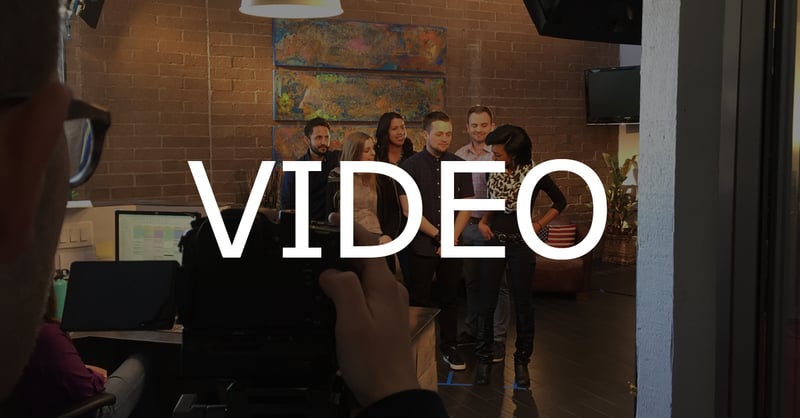 I distinctly remember a Saturday Night Live skit from many years ago featuring a parody of an award show for stock footage and b-roll. It humorously featured a collection of footage nominees such as a random person smoking, pills being moved from a tray into a trough, and overweight people walking through the city filmed from the neck down. I remember laughing out loud — mainly because they skillfully chose some of the most cliché b-roll/stock footage samples you could imagine seeing.
I distinctly remember a Saturday Night Live skit from many years ago featuring a parody of an award show for stock footage and b-roll. It humorously featured a collection of footage nominees such as a random person smoking, pills being moved from a tray into a trough, and overweight people walking through the city filmed from the neck down. I remember laughing out loud — mainly because they skillfully chose some of the most cliché b-roll/stock footage samples you could imagine seeing.
In all seriousness, however, b-roll is a vital part of visual storytelling. It’s meant to support your subject, add details and information and complement the emotional impact of your story. That’s the five-mile-high view, but when it comes to nuts-and-bolts on-the-ground production, what does that really mean? When you have limited time at a location, how do you make b-roll choices that will give you the most visual and emotional impact?
Here are some things you can do to ensure you’ll have the footage you need to really tell the story:
Scout the location before your shoot day. Give yourself time to do this and don’t be in a hurry. I suggest walking every square foot and taking as many reference photos as possible. Consider your subject and their relationship to the location/subject matter. Is there a connection that could be shown via b-roll that would have an immediate and strong visual impact? If you need establishing shots of an exterior of a building or event, take note of where the sun will be at various times. Taking that into consideration may give you some inspiration as to how to leverage dramatic lighting options on your subject.
Plan your shots carefully. Consider not only what you can shoot that will be interesting, but what you can shoot through that will be even more interesting. What do I mean? We live in a three-dimensional world. Depending on where we stand and what’s around us, we experience some objects close to us and some far away. In the camera, this is the basic concept of depth — the distance between foreground and background. When shooting b-roll, consider this and how much more powerful it might be to b-roll your subject through another object (a broken window, an old wooden chair, a gate, a flower bed, etc.). Not only does it create depth perception to the viewer, but it can also speak volumes about the subject.
B-roll footage idea: the subject of your piece is estranged from another family member or perhaps tension is high. Can you find a shot where the subject is visually separated from that other person? For instance, a windowpane in the foreground that cuts the frame in half, separating both of them. A door? Doors and doorways have strong connotations when it comes to relationships. Open. Closed. Cracked open. These types of visuals can say a lot about people and their relationships with other people and their environment.
All that being said, it’s vital to weigh out these options in order to make the most relevant choices for your b-roll. It will do you and your project no good to spend all your time shooting things you cannot use effectively.
Part of this equation is considering your equipment needs: cameras, lighting, grip and electric. Make sure, as you walk your location and begin makings decisions for b-roll setups, that you also make note of any special equipment you may need to pull them off. And pull them off in a timely manner!
Once you’ve finished your location scout, the very next thing is to make a shot list that includes what kind of shot it is (static, hand-held, moving, drone, etc.) and where at the location it will be. Also include any special equipment needs for that shot. Finally, run through the list and review the reference photos. Now begin to break that shot list into a schedule.
Make no mistake about it — when your client is paying for you to be on a location and the clock is ticking, it behooves you to be over-prepared. In fact, being over-prepared will give you more options and more freedom. We live in an imperfect world and unforeseen things can and do happen, especially on location shoots. You may arrive on your shoot day to find out you no longer have two hours for your exterior shots, but only 30 minutes. You may find out at the last minute that part of the location that looked so amazing is no longer available for one reason or another. Things happen all the time, but being over-prepared to get the most relevant b-roll for your story will allow you to make timely adjustments so you can still capture what you need.




